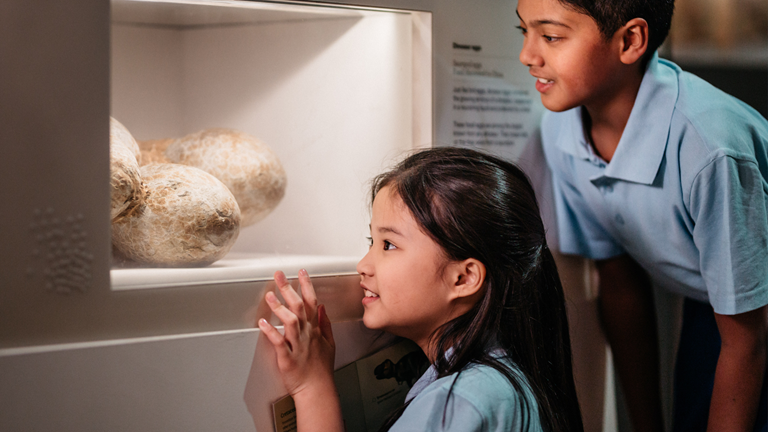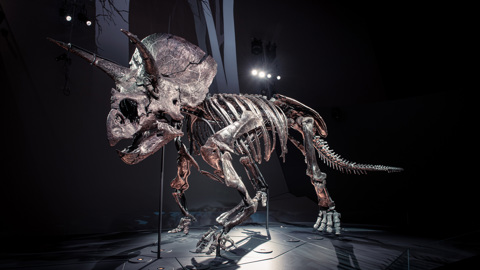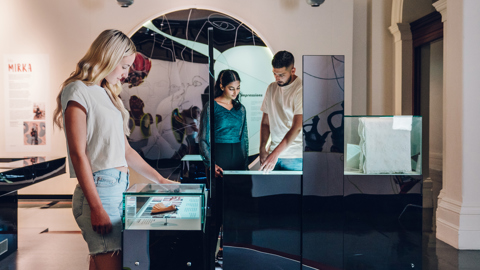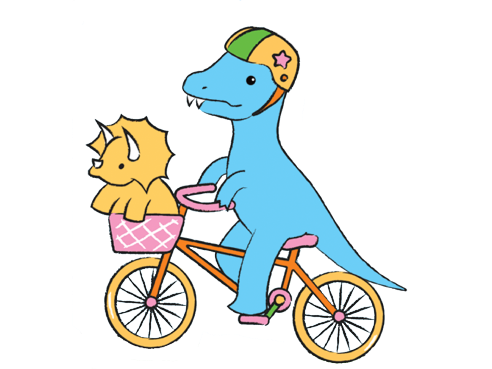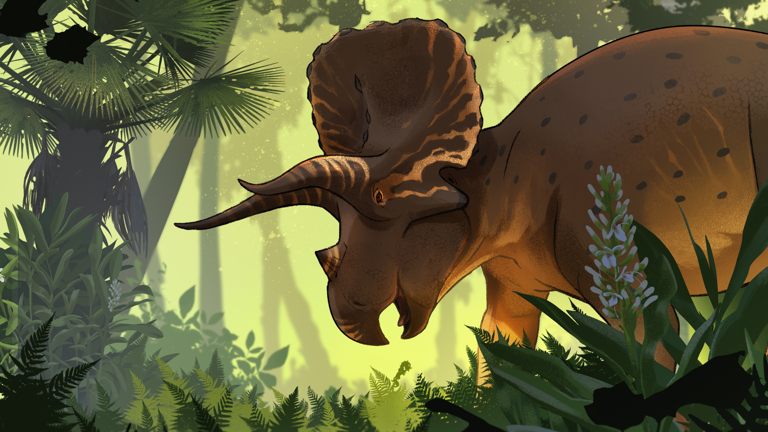
Triceratops Habitats
- What
- Museum Staff-led
- When
- Terms 1 to 4, Monday to Friday
- Duration
- 30 minutes
Curriculum links & Accessibility & Access Fund - Year level
- Years 5 to 6
- Minmum student numbers
- Minimum 15 students
- Maximum student numbers
- Maximum 30 students
- Cost
- $9 per student + education service fee
- Booking information
- Bookings 13 11 02
Explore the habitat of Triceratops based on fossil evidence, and learn how they thrived in their environment.
Students will experience
- Walk through the immersive world of the Triceratops, exploring the various species that lived at the same time.
- Hear from a museum learning expert about how the habitat our Triceratops lived in led to its successful fossilisation.
- Through hands-on objects, discover how Triceratops' amazing structural features enabled it to thrive in its environment.
- Visit the Dinosaur Walk and Triceratops: Fate of the Dinosaurs exhibitions and see real dinosaur fossils.
Students will learn
- Dinosaurs, like all organisms, have evolved over time, as seen in fossils and scientific records.
- Dinosaurs’ structural features and behaviours enable them to thrive in their environments.
- Dinosaur habitats can be described by their physical conditions and changing the physical conditions of a habitat, such as through massive volcanic activity or a major asteroid impact, will affect the growth and survival of organisms.
Students will be provided
- an exclusive dinosaur booklet which can be used in the galleries and back at school.
Students will need
- Please bring pencils for students to be able to complete their booklet in the galleries.
Victorian Curriculum links
Biological sciences: Levels 5 and 6
- habitats can be described by their physical conditions; changing the physical conditions of a habitat, including by human activity, may affect the growth and survival of organisms
VC2S6U01 - organisms have evolved over time, as seen in fossils and scientific records; the structural features and behaviours of living organisms enable them to thrive in their environments
VC2S6U02
